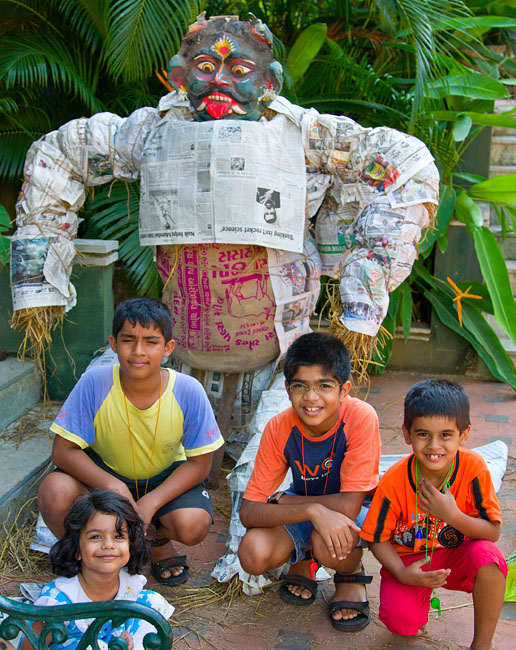The Hindu festival of Diwali (Deepavali) has varied interpretations, each rooted in the triumph of virtue over vice.
Traditionally, Diwali marks the return of Lord Rama, along with His wife Sita and brother Lakshman, from their 14-year exile. The festival is also closely associated with Goddess Lakshmi, who symbolises wealth in its broadest sense, encompassing both material and spiritual abundance.
The festival’s defining event, however, centres on Krishna‘s defeat of Narakasur. Narakasur embodies the vices of darkness (tamas), ignorance (avidya), ego (ahamkara), and unrighteousness (adharma). Following a fierce battle, Krishna summons his sudarshan-chakra (discus) to decapitate the demon, an act that symbolises the restoration of Light (dharma) over shadow.
In Goa, a unique tradition endures: on the eve of Diwali, towns and villages construct towering effigies of Narakasur. After a night of revelry, these effigies are consigned to flames at dawn—a vivid re-enactment of Krishna’s victory and a renewal of the festival’s enduring message.
As a boy I looked forward to the Narkasur Nite, and the preparations in the days leading to it animated us little fellas. Although much has changed since those days, the spirit of the event persists. These photographs were taken in 2007.

My little nephew Yash prepping his Narkasur
5D, 24-105L

My nephew & niece and their friends
5D, 24-105L

Narkasur in the village of Khandola, Goa
5D, 24-105L

Narkasur in Bhatlem, Panjim, Goa
5D, 24-105L

Narkasur in Santa Ines, Panjim, Goa
5D, 24-105L





[…] my past entries here and […]
[…] of Lord Krishna‘s beheading of the demon-king Narkasur as our motif for the occasion. See this blog entry from […]
Thanx..
The ‘quaint’ practice of burning old Nark comes from an even older Goan tradition of having fun every chance they get and even some they do not get.
Goans are the most fun-loving people in India no doubt due to generous sprinkling of the Portugese DNA they have in their gene-pool.
Oh to be born in Goa! Perhaps in my next life.
If I believe Wikipedia, Narakasura is an Assamese tradition.
http://en.wikipedia.org/wiki/Narakasura
How it also left its trace in Goa would be an interesting historical question.
Happy Diwali!